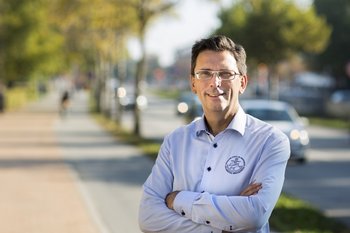Is process optimisation more than just hot air?
I most certainly think so. In the months ahead we will carry out pilot projects to improve the business processes in the administration.
A few weeks ago, I wrote that the administration needs to work smarter, not harder. Our financial situation means that we have to explore how we can exploit increasing our efficiency to lower costs while maintaining or improving the level of administrative service. In short: Can we deliver more for less?
Many of the terms I’ve already used will probably be perceived as hot air, creating associations to factory assembly lines very far from the complex issues we work with in the administration. And now I’m going to introduce yet another one of those buzzwords: Process optimisation.
Aarhus University’s administration is not a factory. In any event, a large proportion of the administrative ‘products’ are invisible processes taking place deep inside the computers and brains of our staff. But nonetheless, I believe that many of you have experienced how the work piles up in certain periods, how bottlenecks in the organisation lead to delays, and how information sometimes gets lost as processes make their way through the organisation.
Our administrative units and employees have already made progress in addressing these kinds of challenges. Tjek&Go is a good example of this, and we’re going to give this work a boost to help us map our processes and goals and make cross-organisational improvements.
However, increasing efficiency isn’t everything. We’re going to use process optimisation as a tool to give us the necessary scope to develop your projects and competences. We have to organise our business processes in the way that brings your knowledge and experience into play in the best possible way. This is how we can improve the quality and efficiency of our service, even though we must also face the fact that the number of employees to provide this service will gradually fall over the coming years.
Our approach to process optimisation
I have asked the consultancy firm Carve to help us investigate whether we can utilise our resources more efficiently. Carve have considerable experience with process optimisation at universities.
Carve will not be rolling out major reforms across the entire organisation. Instead, they will teach us a method and systematic approach that will enable us to continually improve our business processes, both now and in the future. We must also get better at learning from each other. Different employees may have developed their own individual methods of handling the same task, and we need to turn that experience to our advantage so that we can work together to determine what method gives the best result.
To begin with, we will focus on project finance and degree programme administration. Over the course of the spring, we will carry out pilot projects on degree programme administration at the Arts Administrative Centre, on financial management at the HE Administrative Centre, and on project administration at the administrative division AU Finance and Estates Project Development. Carve will assist us in analysing our business processes from A to Z in order to make our operations more transparent.
The process will focus on the challenges that are most relevant for the participating units, and we will build on the experience gained from the pilot projects to continue the process elsewhere in the organisation.
In order to gain the most benefit from the project,it’s crucial that employees and managers at all levels work together on this process. If you have any questions, contact your immediate supervisor or write to me directly, either in a comment on this blog or in a mail to director@au.dk. I look forward to working on this with you and on sharing what we learn along the way.
